Let me tell you something I learned the hard way: a dead car battery isn’t useless. Most people toss them, but that’s like throwing money in the trash. Over the years, I’ve found a dozen ways to bring life back to those old batteries or at least squeeze a few more uses out of them. If you’re a prepper like me, you know that nothing truly goes to waste if you understand how to reuse it.
Let’s go through some practical, real-world ways to make the most out of your so-called dead car batteries.
Test Before You Toss
When your car won’t start, your first thought is usually, “Battery’s dead.” But not every battery that’s “dead” is truly gone. Before scrapping it, grab a multimeter. If the reading shows anything above 11.5 volts, that battery might still have life in it. A reading between 12.4 and 12.6 volts means it’s still healthy.
If you don’t own a multimeter, most auto parts stores will test the battery for free. I’ve had batteries that seemed lifeless crank right back up after a proper charge.
Tip: Try charging it overnight with a smart charger. Smart chargers are designed to bring a weak battery back slowly, which prevents overheating. Some deep-cycle or AGM batteries can recover even after sitting for months.
If it won’t hold a charge, that’s when you can move to one of the next methods.
Revive It with an Epsom Salt Mix
 This is an old-school trick I learned from a neighbor who rebuilt farm equipment. Mix one tablespoon of Epsom salt per gallon of distilled water. Use this mixture to refill each cell of a lead-acid battery (only if the old fluid has evaporated or looks cloudy). Do not use tap water; minerals can ruin the internal plates.
This is an old-school trick I learned from a neighbor who rebuilt farm equipment. Mix one tablespoon of Epsom salt per gallon of distilled water. Use this mixture to refill each cell of a lead-acid battery (only if the old fluid has evaporated or looks cloudy). Do not use tap water; minerals can ruin the internal plates.
After refilling, give it a slow charge with a 12-volt charger. Sometimes the magnesium sulfate helps dissolve sulfate buildup on the plates, restoring charge capacity.
I’ve personally brought back a couple of “dead” batteries using this exact method. They lasted another year or two. It’s not a miracle cure, but it’s a great way to stretch a battery’s life.
Safety reminder: Always wear gloves, eye protection, and work in a ventilated area when working with battery acid.
Build a DIY Solar Power Storage Bank
If you’ve got multiple old car batteries, this next use might surprise you. Even half-dead batteries can be linked together to store solar energy. The truth is not everyone has money to buy a high-quality full solar generator & panels system. Even if it is as affordable as this one from Jackery. Most people need to adapt due to limited budgets.
Here’s what I did. I built a backup power system using four used car batteries from the junkyard. Together, they gave me a 12-volt off-grid setup for less than $100. (This is because I already had the basic solar panel kit available. If you need a new one, you will spend a little more, still very affordable.)
It won’t power your house, but it can keep lights, radios, and small tools running during a power outage. All you need is:
- A basic solar panel kit (around 100W)
- A charge controller
- Some wiring and clamps
- Your old batteries wired in parallel
I used this setup during an ice storm when the grid went down. It kept my freezer and a few lights on for three days. It’s one of those projects that pays for itself the first time you need it.
You can also use an inverter to power 110V items like laptops or small fans. I’ve even used mine to recharge cordless tool batteries.
You’ve just seen how a few junkyard batteries and a solar panel can keep your lights on when everyone else is in the dark. That’s the power of thinking beyond the system — and it’s exactly the kind of mindset that real preppers live by. But if you want to take that idea further, to build energy, water, heat, and independence that don’t depend on anyone else, you need a blueprint that actually works when the grid dies for good.
No Grid Survival Projects is that blueprint.
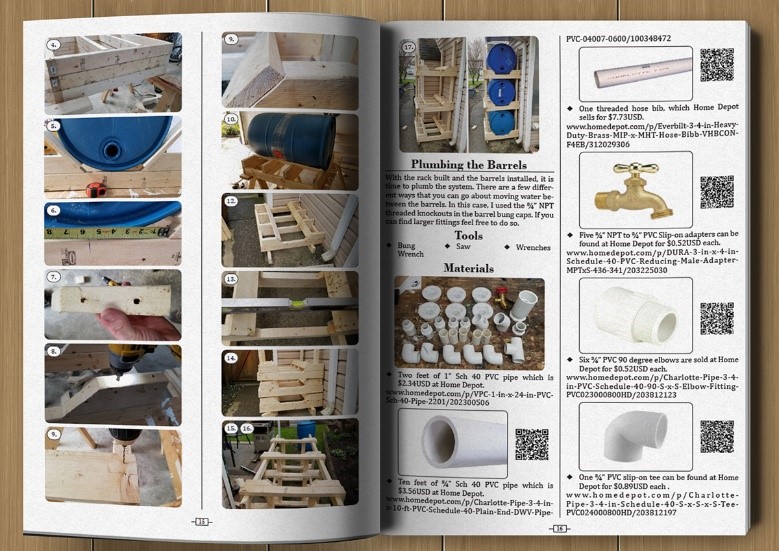
This isn’t about cute backyard hacks — it’s the kind of hard-tested, real-world engineering that keeps families alive when modern life collapses. From solar banks to off-grid water systems, DIY heating, and low-tech refrigeration, it walks you step-by-step through building your own self-reliant power base. These are systems you can build now, while parts are still cheap, and rely on when the blackout never ends.
If you’ve ever said, “I want to be off-grid someday,” that “someday” better be soon.
Grab No Grid Survival Projects and start building the independence you can’t buy when the lights go out!
Trade It for Cash or Credit
Auto parts stores often offer cash or credit when you return used batteries. It’s part of their recycling program. Most will pay between $5 and $20 depending on the battery size and condition.
Even scrapyards will pay you per pound for lead. Last time I checked, I got around 30 cents per pound. That’s about $12 for a single car battery.
Pro tip: Always return your old one when buying a new battery. You’ll save money through the core charge refund, which can be $15 to $25 depending on where you shop.
If you’re in a tight spot, a few old batteries can add up to quick pocket cash.
Turning scrap into cash is smart — but the real danger isn’t losing a few dollars on an old battery. It’s losing the dollar itself. Every financial system in history has crashed. Ours just happens to be the biggest bubble of all. The government’s printing fake prosperity while burying us in debt, and the average person is too distracted to see it happening in real time.
Dollar Apocalypse pulls back the curtain on that illusion.
It exposes how the global economy is already fracturing and, more importantly, shows you how to protect yourself when it finally falls apart. You’ll learn how to store value outside the system, what assets actually survive inflation, and how to rebuild wealth when paper money burns. It’s not fearmongering — it’s financial self-defense for a country sprinting toward the edge.
If you can see the cracks forming, you’re already ahead of 99% of people.
Read Dollar Apocalypse now before the crash makes your savings a memory!
Power Small Projects Around the Homestead
You can repurpose a weak battery to run small 12-volt projects. I’ve used one to power:
- A chicken coop light with a solar charger
- A small water pump for my rain barrel system
- A radio setup in my workshop
- An electric fence energizer
Even with limited capacity, these old batteries can still run light loads for hours if maintained with a solar trickle charger. For low-energy projects, they’re a perfect solution.
Want a bonus idea? Hook one up to an old 12V fan or LED strip lights in your shed or garage. It’s an easy backup lighting system that costs almost nothing.
Recover the Lead and Acid (If You’re Skilled)
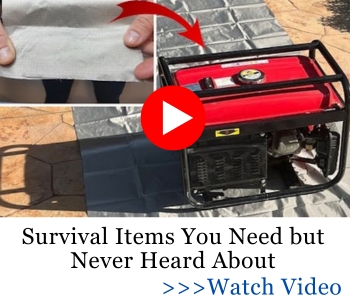 This is not for beginners, but some experienced preppers recover lead from batteries for casting or bullet making. The sulfuric acid can also be neutralized with baking soda and disposed of safely. I don’t recommend doing this unless you’re well-versed in handling hazardous materials.
This is not for beginners, but some experienced preppers recover lead from batteries for casting or bullet making. The sulfuric acid can also be neutralized with baking soda and disposed of safely. I don’t recommend doing this unless you’re well-versed in handling hazardous materials.
If you go this route, always do it outdoors with proper protective gear. The lead plates inside can be melted down for fishing weights, bullet molds, or other small projects. Lead melts at 621°F, so a basic propane forge can handle it.
I know one prepper who recovers old battery lead for reloading supplies. It saves him a good bit of money every season.
Recondition with a Desulfator
Battery desulfators are small devices that use high-frequency pulses to break down the sulfation buildup that kills lead-acid batteries. You can find them online for about $30.
I’ve tested this method several times. Results vary, but I’ve had a few batteries come back strong enough to run a riding mower or generator.
The key is patience. Hook up the desulfator for a few days, then recharge and test. You might be surprised by the results. Combine this with the Epsom salt treatment, and you can often squeeze another year out of an old battery.
If you’re serious about battery storage for prepping, a desulfator is a tool worth owning.
Use It as a Training Tool
If you like teaching kids or neighbors basic survival and mechanical skills, old batteries make perfect training tools. I’ve used them to teach:
- Safe battery handling
- Electrical wiring basics
- Solar system setup
- Off-grid maintenance lessons
When the battery fails completely, there’s no loss. It becomes a free prop for learning. Teaching others how to safely handle and test old batteries is a great way to pass on practical skills.
Donate to Local Mechanics or Hobbyists
If you don’t want to mess with reconditioning, donate the battery. Small-town mechanics, metal artists, and DIY solar enthusiasts often use them for practice or parts.
I once gave away five batteries on Facebook Marketplace. Within an hour, a local hobbyist picked them up for his electric go-kart project. You’d be amazed how quickly people will pick them up for free.
Even local high schools or technical programs sometimes use them for auto repair training. Giving your old battery away means it keeps serving a purpose instead of ending up in a landfill.
Recycle Responsibly
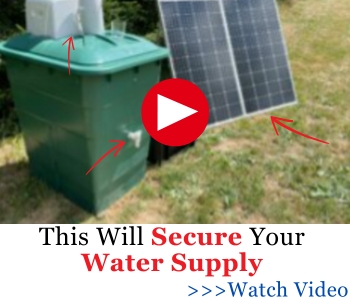 Every car battery contains about 20 pounds of lead and a gallon of acid. Tossing one in the trash can harm soil and water. Recycling centers recover nearly all materials for reuse. Most stores that sell car batteries will take them off your hands.
Every car battery contains about 20 pounds of lead and a gallon of acid. Tossing one in the trash can harm soil and water. Recycling centers recover nearly all materials for reuse. Most stores that sell car batteries will take them off your hands.
If you’re cleaning out your garage, load up your old batteries and drop them off at your local recycling station. Many areas even have free collection days. The Environmental Protection Agency estimates that over 99% of lead-acid batteries in the U.S. are recycled today, which makes it one of the most successfully recycled products on the planet.
Proper recycling helps prevent toxic contamination and keeps valuable materials in circulation. It’s one of the simplest prepper habits to maintain.
Use as an Emergency Power Source
A car battery, even a weak one, can be a lifesaver in an emergency. Hooked to a small inverter, it can charge phones, radios, flashlights, or even medical devices. I once used one to power a small fan during a heatwave when the power went out.
Keep jumper cables or a small inverter in your vehicle. You can connect the battery and pull limited power directly when needed. It won’t last long, but in a pinch, it can buy you time.
For long-term preparedness, I keep two reconditioned car batteries charged and stored on a wooden shelf in my garage. They’ve saved me more than once.
Reviving old batteries is one way to stay prepared — but when society’s battery finally dies, you’ll need more than backup power. You’ll need a plan to survive where you stand. Because when the grid goes down, roads clog, and violence spills into the suburbs, “bugging out” becomes a fantasy. Most people won’t make it ten miles. Those who do will wish they hadn’t.
The Navy SEAL Bug-In Guide shows you the other way — the real way.
Written by a Navy SEAL who’s lived through collapse and combat, it gives you the tactics to fortify your home, secure your perimeter, and turn your property into a self-sufficient stronghold. It’s about preparation, discipline, and making your home a fortress that outlasts chaos. This isn’t theory — it’s survival training for people who plan to stand their ground.
When everyone else is running, you’ll already be behind locked doors with light, food, and a plan. Get The Navy SEAL Bug-In Guide and learn how to hold the line when there’s nowhere left to run:
A Navy SEAL’s Bug-In Guide – The Ultimate Stay-Put Survival Plan
Final Thoughts
A “dead” battery isn’t always dead. Whether you revive it, repurpose it, or recycle it, you can still get value out of it. In a grid-down or emergency situation, having spare car batteries could make the difference between light and darkness.
I never look at old car batteries the same way anymore. Each one holds potential energy waiting to be tapped. Give it a second chance before you give it away. Once you start seeing value where others see waste, you’re already thinking like a true prepper.
You may also like:
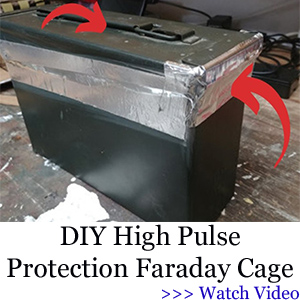 Why Every Prepper Needs 550 Paracord (And How to Choose the Best One)
Why Every Prepper Needs 550 Paracord (And How to Choose the Best One)
This Homemade Device Can Power Up Your Entire House 7 Days in a Row (Video)
Turn a Car Battery Into an Emergency Power Source For the Home

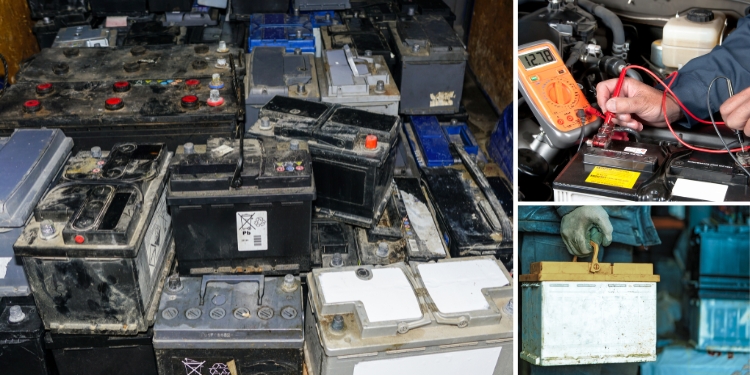








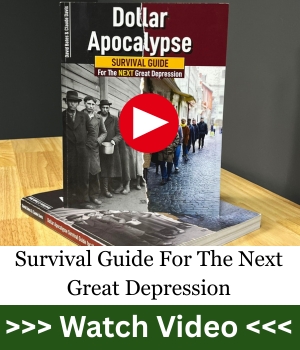
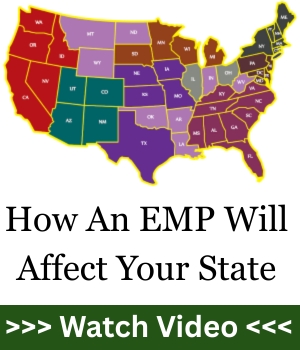


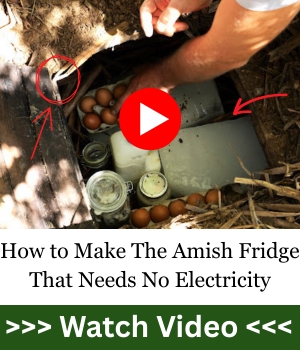

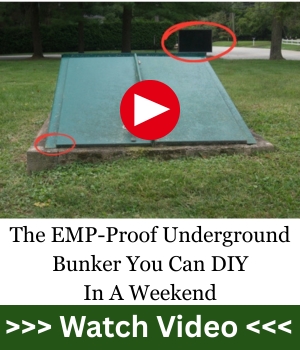
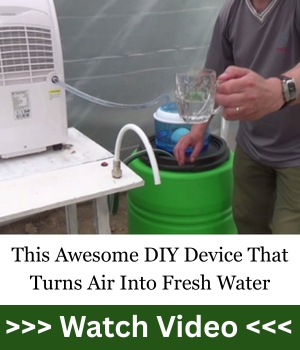





If we have a serious grid down type event, our vehicles won’t be moving. The good batteries in them can be used in a similar way to those “solar generators.”
Our camper runs on batteries charged by the solar panel.
We lived 6-9 months/year off the grid with solar, wind (boat had a wind generator), and propane.
Removing the vehicle batteries and using the foldable (or other) solar chargers is better for us than one of those expensive units. We have 2 inverters…small and medium. A less efficient way of charging 110, but it works.
When/if we lose power, we already have a few decent/good batteries in our garage.
Growing up on a farm in South-South Texas, orchard, I remember my Dad, born 1912, saving old batteries, I also remember a small business in town that rebuilt batteries and sold them… So, this article seems to be one of your good ones with good info… Anything that sparks memories of years gone is damn worth reading and digging deeper into… I have to thank you… But now I have to mention prepping folks selling digital only info products… If it ain’t in printed form, I do not waste my money… a book can be read anywhere, anytime, no need for any kind of power, and I do believe that there will be a time where there won’t be any power… I have your books that your recommended in print in my small reference library, yours are just a few of the many… what I don’t have is a computer loaded with a ton of digital info thats totally wasted when power disappears… I rotate from off grid to on grid several times a year, but still, I realize that there will be a time that all power will be gone, but printed books will prevail… even books for entertainment are well worth their weight in gold… Thank you,,, I just had to bring up you guys pushing the sale of digital only references, I apologize, but its the truth… and I know about printers, duh… I have a laser printer but I’m not going to waste it printing someone’s digital book… hahaha.. ok, I’m done… PS, this battery info was great, I will research for more printed info on the subject… I again, thank you.. keep up the good work..
Really appreciate your thoughtful words and the memories you shared. You’re absolutely right! Nothing beats having real books in hand when the power’s out. Glad you enjoyed the article and found the battery info useful. Old-school knowledge never goes out of style!
Maybe I’m wrong but aren’t most car batteries now sealed so you can’t get to the guts and do all of the things mentioned? If so you won’t be able to fix a dead battery. If I’m wrong let me know so I can know how you CAN do these things because it’s good info.
Good point, lead/acid batteries are still common.
Gel cell, deep cycle, Nicads, Lipos are not mentioned.
All are available for 12 v transportation systems.
You’re right that most modern car batteries are labeled “maintenance-free,” meaning they’re sealed and don’t have the old-school caps you could pop open to refill with distilled water or Epsom mix. Those sealed types, like AGM or gel batteries, use internal pressure valves and are built to recombine gases instead of venting, so you can’t safely access the electrolyte or “guts” like in older flooded-lead-acid models. If you try forcing them open, you’ll likely ruin the internal structure or cause a leak that can’t be reversed.
That said, plenty of people still use older, serviceable lead-acid batteries, especially in off-grid systems, tractors, and older vehicles. Those are the ones where the techniques mentioned in the article can still work, checking each cell, topping up low fluid levels with distilled water, or breaking down sulfate buildup using the Epsom salt method. The key is identifying your battery type first. If it’s sealed, stick to desulfator chargers or power-restoration tools that don’t require opening it. But if you’ve got an accessible model, those reconditioning steps can absolutely bring it back to life.
Under that sticker on top of the battery there will be 6 ‘vents’ that can be removed.
Usually with a thin screwdriver.
Many times a weak battery is just low on distilled water.
Poppy, I too prefer ink on paper over digital, but I do have a large file of digital files that after downloaded can be accessed and printed off, so they are still a great valid source of info.
JBW
That is exactly the point in many cases. We can use technology to our advantage and why not do it? Having a digital backup on a drive not connected to any network means we always have that information and we just need to print it.
But what power will be there to run your printers and how will you replace the ink? I’m not trying to be snotty, I’m truly asking. The power has been described here, but the ink? Can you make your own that won’t ruin the printer itself? TYIA!
Anna, we need to be prepared before we need the printer to print something urgent! Even so, if you do have that digital backup and let’s say there is no more ink in the world for printers, you can still connect the hard drive to a PC with a generator and write down the information you need with good old pen and paper.
I take the tops off of dead batteries and dump out the acid into a five gallon bucket. Then I take out the lead plates and melt them down so I can use them for bullets or fishing sinkers. It doesn’t take a lot of heat to melt it. A campfire will do.I have the molds for the sinkers and black powder bullets. The acid gets used t o take the rust off of old tools. I dip them in the acid with a hanger and let them sit a while. The take them out and wash them off to neutralize the acid. I’ve been doing this for years. You can also get some casting sand and mold other things out of the melted lead.
Mostly, little help. BUT makes you think, especially in the immediate after math.
DONT figure out 8 months later that those abandoned batteries have VALUE even if the car wont run, pick them up on day 8, stock pile, use them.
WHERE do you live, up north ? we better mention, a flat dead battery that can easily be re charged, will freeze and buckle the plates and then it IS JUNK, so , trickle a little DC into them and keep the voltage up there. However much charge they have, they will loose 1 % in storage per day. So, full charged, will be 99% tomorrow, and the next day it will only
loose 1 % of 99% and so on.
PS if you hook up to solar today, for some savings, you can turn that into more NEW batteries and solar panels. They wont keep forever, but NEW dry charged un filled lead acid batteries, will keep almost forever. BRAND new when SHTF. Most wrecking yards sell slightly used batteries at big savings, good way to populate a solar farm. Solar panels wear out too ! so, some savings MUST be put into new units, set aside till SHTF. The wind scrubs them with dust and reduces power transmission from the sun, and as I understand it, the internals also wear down/ out
Great points, especially about cold weather and battery maintenance. Most folks don’t realize how fast a “dead” battery can become junk if it freezes. Keeping a small DC trickle or solar maintainer on them is a smart move. And you’re absolutely right! Those “abandoned” batteries can be gold when SHTF if you grab and store them early.
Squirrel
I know the hidden vents you’re talking about on those maintenance-free batteries. And shame on me I have replaced seven or eight of those in the last 10 years on different vehicles and never bothered to check the fluid level. I’m hoping that you check back every couple of days for a little while to see if people have posted comments regarding you, and here is mine. You seemed have some knowledge so I’m asking you the question with modern vehicles requiring so incredibly much electrical power, with 50 million things we never knew we needed sucking electricity, today’s alternators are three times the size they used to be and sometimes more. Do you think that this leads to some of the early battery failure due to the high charging, and no one ever checking the electrolyte level?
This is one of the clearest explanations I’ve seen. Thanks!